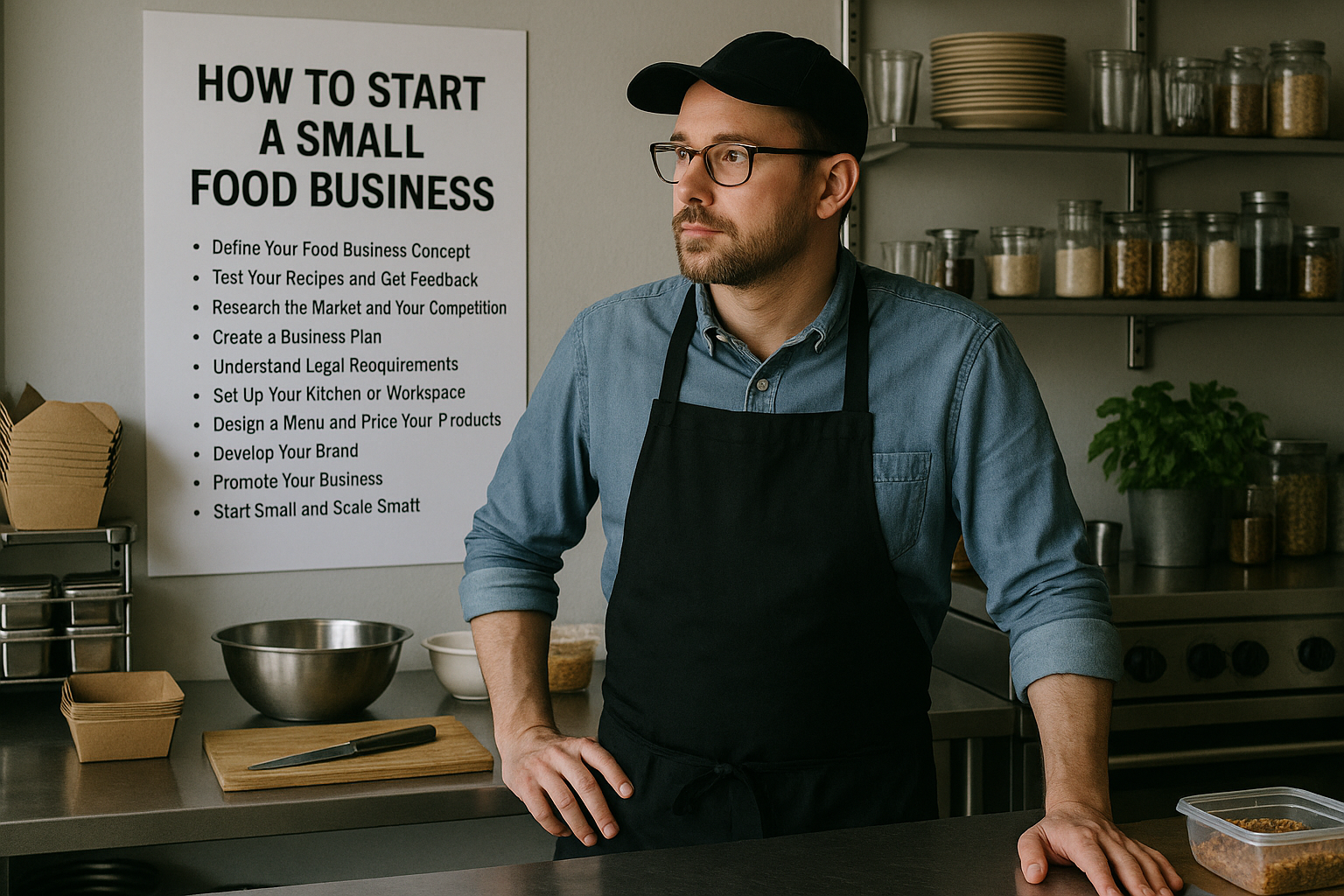Starting a small food business can be a rewarding and profitable venture, especially if you have a passion for cooking and serving others. Whether you dream of running a bakery, a food truck, or a home-based catering service, the food industry offers endless possibilities. However, turning your culinary skills into a sustainable business requires more than just great recipes. It takes planning, strategy, and understanding your market.
Here’s a step-by-step guide on how to start a small food business from the ground up.
1. Define Your Food Business Concept
Before doing anything else, you need to be clear about what type of food business you want to run. Your concept will guide all other decisions, from marketing to equipment and legal requirements.
Ask yourself:
- What kind of food will I sell? (baked goods, frozen meals, snacks, etc.)
- Who is my target audience? (busy professionals, health-conscious individuals, families, etc.)
- How will I sell it? (online delivery, local markets, food truck, physical store)
Having a focused concept will make your business more memorable and easier to market.
2. Test Your Recipes and Get Feedback
Even if you’re confident in your recipes, it’s important to test them with real people. Offer samples to family, friends, and neighbors, and ask for honest feedback.
- Is the food delicious and consistent?
- Are portion sizes appropriate?
- Would people be willing to pay for it?
Based on this feedback, make necessary improvements. Consistency is key in the food industry.
3. Research the Market and Your Competition
Understanding the market demand and knowing your competition is essential for success. Look into:
- What types of food businesses are popular in your area?
- What are their price points?
- What makes them successful?
- Are there gaps in the market you can fill?
Use online tools like Google Trends, local Facebook groups, and surveys to gather insights.
4. Create a Business Plan
A simple business plan is your roadmap. It helps you stay focused and can also attract investors or secure a loan if needed.
Key elements to include:
- Business description and goals
- Target market
- Competitor analysis
- Marketing strategy
- Menu and pricing
- Startup costs
- Financial projections
- Legal structure and licenses
Even a one-page version can help you clarify your direction.
5. Understand Legal Requirements
Food businesses are highly regulated, and compliance is non-negotiable.
You may need:
- A business license
- Food handler’s permit or certification
- Health department inspection and approval
- Insurance (general liability, food liability, etc.)
- Registration with the FDA or local food authority (for packaged goods)
Check your local and state regulations thoroughly before launching.
6. Set Up Your Kitchen or Workspace
You need a kitchen that meets both your needs and legal standards. Depending on your location, home-based kitchens may be allowed (often called “cottage food laws”), but there are usually restrictions.
Alternatives include:
- Renting a commercial kitchen
- Partnering with a local restaurant during off-hours
- Using a shared kitchen space or incubator for startups
Make sure your kitchen is clean, safe, and efficient.
7. Design a Menu and Price Your Products
Start with a simple menu of your best, most cost-effective dishes. Focus on quality over quantity. Your pricing should cover:
- Ingredient costs
- Labor
- Packaging
- Overhead
- Profit margin
Avoid underpricing just to compete—you need to sustain the business.
8. Develop Your Brand
Your brand is how customers connect emotionally with your business. It includes your:
- Business name
- Logo
- Packaging style
- Tone of voice
- Story and mission
Choose a name that reflects your food and is easy to remember. Consistency across all branding elements builds trust.
9. Promote Your Business
Start marketing before your official launch to build anticipation. Here are budget-friendly ways to get the word out:
- Create a business profile on Instagram and Facebook
- Post behind-the-scenes content and food photos
- Offer limited-time discounts to early customers
- Collaborate with local influencers or food bloggers
- Ask happy customers to leave reviews
If you’re targeting your local area, consider handing out flyers, attending farmers markets, or listing on Google My Business.
10. Start Small and Scale Smart
You don’t have to launch with a full-scale operation. Begin with a limited menu and small production to control quality and test demand.
Examples of starting small:
- Selling from your home kitchen on weekends
- Partnering with a local coffee shop to sell your baked goods
- Offering delivery through apps like Uber Eats or DoorDash
- Catering small events for friends or community groups
Once you have steady income and customer feedback, you can reinvest and grow your operations.
Tips to Keep in Mind
- Stay consistent: Build a reputation for reliability and great service.
- Control food waste: Track inventory closely to maximize profits.
- Listen to your customers: Their feedback helps you improve and innovate.
- Stay legal: Renew permits, update licenses, and meet health codes at all times.
- Be patient: Building a loyal customer base takes time and effort.
Realistic Startup Costs
Many people wonder, “Can I start a food business with a small budget?” The answer is yes, especially if you start small and gradually grow. Here’s a rough breakdown:
- Business license & permits: $100–$500
- Food safety training: $50–$150
- Initial ingredients: $200–$500
- Packaging: $100–$300
- Marketing & branding: $100–$300
- Misc. equipment/tools: $300–$1,000 (if not using existing kitchen tools)
Estimated total: $850 to $2,750
By renting shared spaces, reusing equipment, and selling online, you can keep costs low while gaining traction.
Building Something Delicious—And Sustainable
Starting a small food business isn’t easy, but with passion, persistence, and planning, it’s absolutely possible. Focus on delighting your customers, building strong systems, and adapting to feedback. With every dish you serve, you’re not just building a business—you’re building a brand that people will love and trust.
